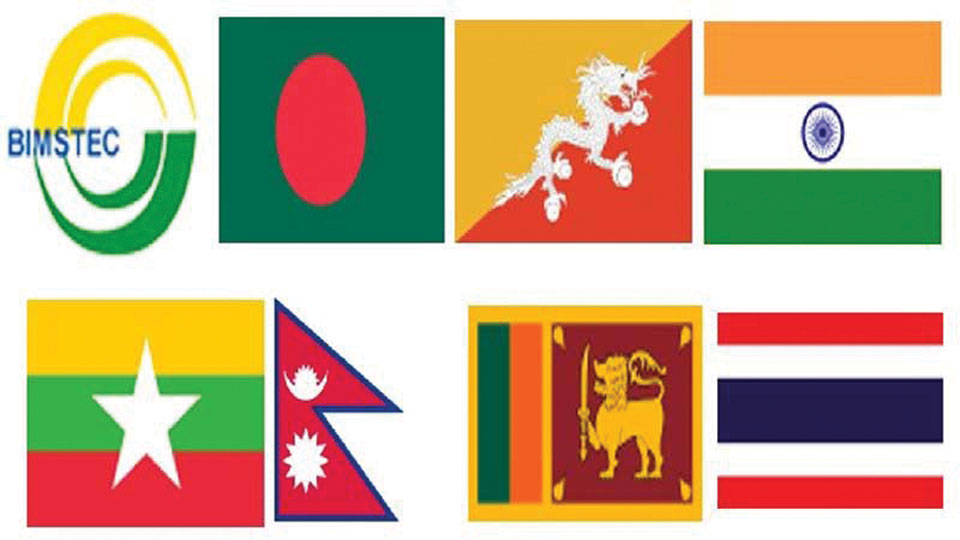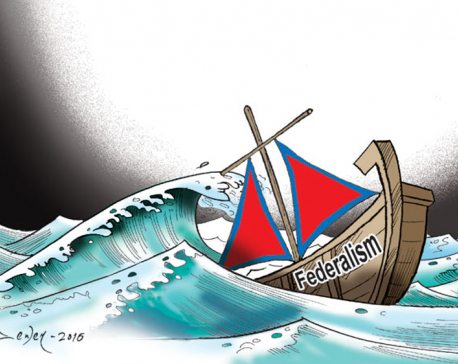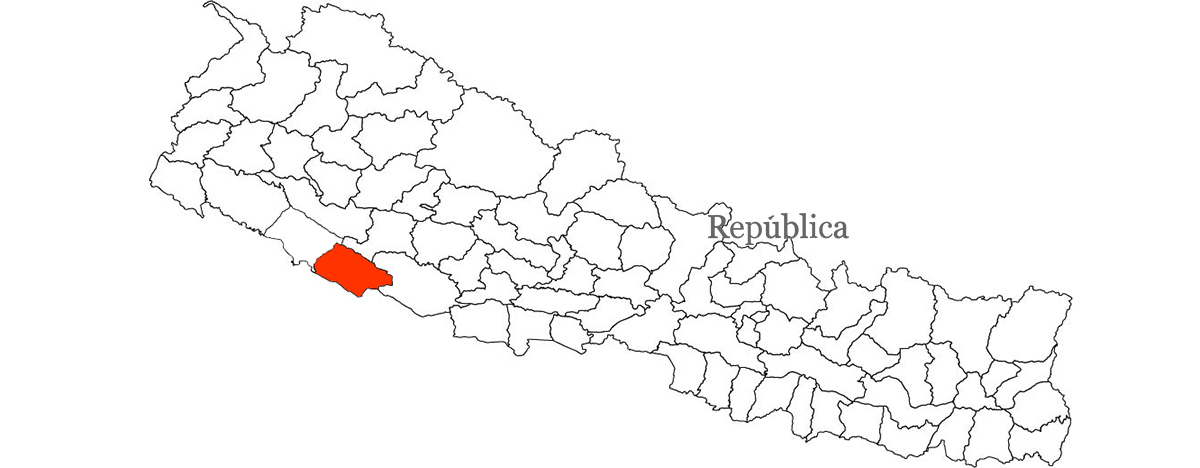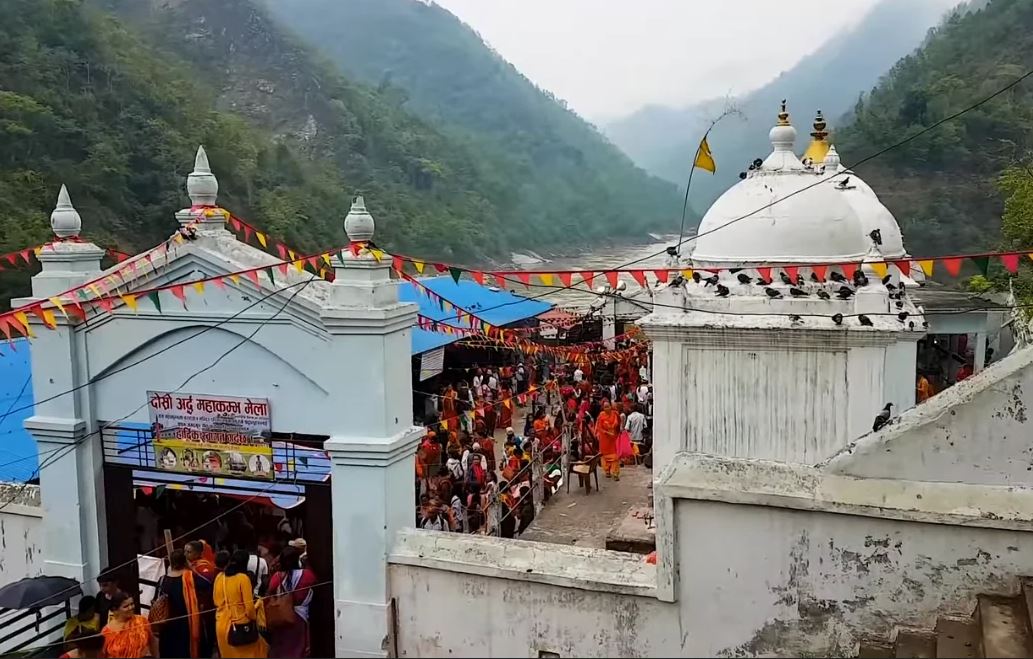
OR

More from Author
BIMSTEC should adopt a charter. It will increase predictability, institutionalization, and legitimacy of the regional organization
Heads of governments of five countries from South Asia and two in Southeast Asia will assemble in Nepal’s capital on August 30-31 for the fourth summit of the Bay of Bengal Initiatives for Multi-Sectoral Technical Economic Cooperation (BIMSTEC). The summit is taking place after the regional grouping completed two decades of its existence since it was founded in 1997. Thus it would be worthwhile to take stock of how BIMSTEC has fared in achieving its lofty goals and objectives and what needs to be done to reinvigorate the group in order to achieve the intended objectives.
How it evolved
The BIMSTEC was formed as a regional cooperation forum around the arc of countries around the Bay of Bengal to foster economic cooperation. Originally, the grouping was formed among four countries—namely Bangladesh, India, Sri Lanka and Thailand—and it was named after the initials of the participating countries as BIST-EC, EC standing for economic cooperation. In 1998, the name was changed to BIMST-EC after Myanmar joined the group. Nepal joined BIMSTEC as an observer the same year. Upon Nepal’s suggestion, the present generic name of the grouping was adopted after Nepal and Bhutan were admitted as full members in 2004.
When Nepal joined BIMSTEC, there was big expectation that this regional grouping would be able to achieve the miracles that its South Asian counterpart SAARC was unable to achieve due to nagging political differences, especially between India and Pakistan. As the grouping was formed around the Bay of Bengal, it was important for Nepal to join it, because most of Nepal’s trade and transit operated through this bay. Entering this regional cooperation bloc, Nepal also hoped to seek an entry into the Southeast Asian nations, especially for enhancing connectivity and opportunities in trade, transit, investment, energy and tourism.
When Nepal joined, Nepal also signed up the framework agreement that would have allowed negotiations to be conducted for a BIMSTEC free trade pact because Nepal did not want to miss the train. But the train did not move and the free trade pact has not yet materialized. An agreement on the free trade in goods is supposed to be concluded this time. The BIMSTEC free trade track was hailed for its inclusion of services and investment regime, for which negotiation is yet to conclude.
Dismal show
BIMSTEC is a non-starter like SAARC. In fact, it inherits all the problems and maladies of the SAARC. Sans the big political differences among its members, it was expected that the BIMSTEC would move ahead easily bringing in much-awaited dividends for regional cooperation. But like the SAARC, the BIMSTEC started proliferating its agencies and official meetings without much tangible achievements and adopting decisions and declarations that it could not be implemented.
Like SAARC, BIMSTEC’s areas of cooperation have been losing a focus required for a regional grouping formed for economic integration and connectivity. The BIMSTEC’s “multi-sectoral approach” to cooperation kept adding areas of cooperation, extended to fourteen, each without much fruition. It now even includes security cooperation.
The BIMSTEC does not have a strong institutional mechanism that would have allowed the grouping to execute big decisions its leaders have taken from time to time. The BIMSTEC Secretariat was established only in 2014, a decade after the grouping held its first summit in 2004. Though a Secretary General has since been appointed, the BIMSTEC Secretariat lacks mandate, resources and drive to execute regional projects and endeavors. Unlike ASEAN, the BIMSTEC has not been able to produce implementation mechanism for big regional projects. Neither has it started any meaningful engagement with other regional blocs such as ASEAN and the SAARC.
Most importantly, the BIMSTEC suffers from a leadership deficit and differing levels of economic development and interests among its member states. It lacks a strong political and cultural identity required to drive a regional grouping. Perhaps, the only connecting theme among its seven members is the thread of Buddhism. That is why there is the focus on Buddhist circuit for tourism development.
In the absence of an emotional thread to connect all members, the core economic cooperation cannot progress well. The BIMSTEC leaders should seek ways to improve connectivity among its members through land/air energy grids, people-to-people contacts and connectivity of the ideas. They must seek to find new concepts to keep this group going, as there is a general apathy toward regional cooperation organizations in general.
Making it successful
Since BIMSTEC has completed its two decades of existence, its leaders should give it a chance through a transformative change to make it a successful cooperation bloc. Perhaps, they should appoint a group of eminent persons to suggest as to how this grouping can be transformed effectively into a meaningful bloc and thereby add value to existing bilateral and regional mechanisms between the member states.
The leaders can consider renaming the group to everybody’s taste than it is known from the clumsy acronym. There have been proposals for renaming it as Bay of Bengal Economic Community. This should also coincide with the transformative decisions to progress from the current mode of regional cooperation to that of economic integration to a customs union or and eventually to that of an economic union.
This is the opportune time for the group to adopt a charter. The ASEAN adopted its charter only in 2008 four decades after the bloc came into existence in 1967. A charter will increase the predictability, institutionalization and legitimacy of the regional organization. But it must also be noted that restrictive and rigid provisions in the charter, like that of SAARC, can hinder decision-making and progress in the organization. For example, two of the BIMSTEC members are directly dealing with the Rohingya refugee crisis, arising from the mass exodus from Myanmar to Bangladesh where they are camped. If the group cannot deal with such complicated issues, it will be sidelined in decision-making. BIMSTEC needs to remain flexible in dealing with the political issues among the member states. It should consider bringing in interested observers and dialogue partners from outside the region. For example, it should find ways to engage China which has good bilateral relations and economic linkages with all BIMSTEC member countries.
BIMSTEC should focus its activities on core areas of regional economic integration and connectivity. It should consolidate its activities under new clusters reducing the areas of cooperation to at least half from 14. That would allow its seven members to lead at least one cluster of activities in rotation. BIMSTEC leaders should consider giving mandate and resources to the Secretary General to propose and execute projects of regional nature. They can decide the ambassadors of the respective countries based in Dhaka, where the Secretariat is located, as permanent representatives to regional bloc as well.
The funding mechanism for the regional projects is not adequate. A BIMSTEC Development Fund is under discussion. Experience in the SAARC Development Fund has proved that the modality of funding through the decision of the steering committee comprising of all member states will hardly be able to finance projects of regional nature. In this context, perhaps it would be better to set up a BIMSTEC Bank which can operate in more institutional fashion. Alternately, they can tie up some of the activities with the Asian Development Bank. The Bank has already partnered with the BIMSTEC for a transport and logistics study. This can be extended to partnership as well.
With population of 1.6 billion and a combined GDP of $ 2.5 trillion, BIMSTEC region is globally important. It is already among the fastest growing regions in the world. The BIMSTEC countries have achieved impressive economic growth in the past decade, even without effective economic cooperation. If the mode of cooperation is elevated to yet another level, the region can do miracles and achieve a lot collectivity.
Therefore, BIMSTEC leaders should rise to meet the expectation during the Kathmandu summit to fast-track the regional cooperation. Larger members should provide greater impetus to the regional integration process. India and Thailand have been major drivers of moving this process forward. They should continue to provide the required lead to take the BIMSTEC to yet another level of cooperation. Most importantly, BIMSTEC leaders must acknowledge that “business as usual” will not lead this bloc to anywhere.
As landlocked countries, Nepal and Bhutan can hope to get more access to the oceanic resources and better trade and transit through the Bay of Bengal. There are already some agendas to foster the blue economy of the oceans and the mountain economy of the Himalayas. But concrete action will be required to provide more direct access for landlocked Nepal and Bhutan to the oceanic resources of the Bay of Bengal, which is provided for in the UN Law of the Sea.
Opportunity for Nepal
As the host country, fourth BIMSTEC Summit will be yet another opportunity for Nepal to showcase its commitment and leadership in regional cooperation. As a country that has recently entered into an era of political stability and economic prosperity, Nepal can inject the theme of prosperity and connectivity in the fourth summit.
The Kathmandu Declaration, the BIMSTEC leaders are supposed to adopt during the summit, should highlight the importance of a transformative change in the group and chart new roadmap for implementation of the agreed decisions so that it can bring tangible changes in the lives of people in the region.
BIMSTEC leaders should rise to the occasion and provide a new momentum and impetus to the regional integration exercise to a n ew height.
The author is former Permanent Representative of Nepal to the United Nations
You May Like This

Exploring opportunities and Challenges of Increasing Online Transactions in Nepal
Recently, I embarked on an errand for my parents. Upon completing my purchases, I proceeded to the checkout. The cashier,... Read More...

Why Federalism has Become Risky for Nepalese Democracy
The question arises, do federal or unitary systems promote better social, political and economic outcomes? Within three broad policy areas—political... Read More...

Nepal's Forests in Flames: Echoes of Urgency and Hopeful Solutions
With the onset of the dry season, Nepal's forests undergo a transition from carbon sinks to carbon sources, emitting significant... Read More...







Just In
- 265 cottage and small industries shut down in Banke
- NEPSE lost 53.16 points, while investors lost Rs 85 billion from shares trading last week
- Rainbow tourism int'l conference kicks off
- Over 200,000 devotees throng Maha Kumbha Mela at Barahakshetra
- Indians vote in the first phase of the world’s largest election as Modi seeks a third term
- Kushal Dixit selected for London Marathon
- Nepal faces Hong Kong today for ACC Emerging Teams Asia Cup
- 286 new industries registered in Nepal in first nine months of current FY, attracting Rs 165 billion investment






_20220508065243.jpg)





Leave A Comment